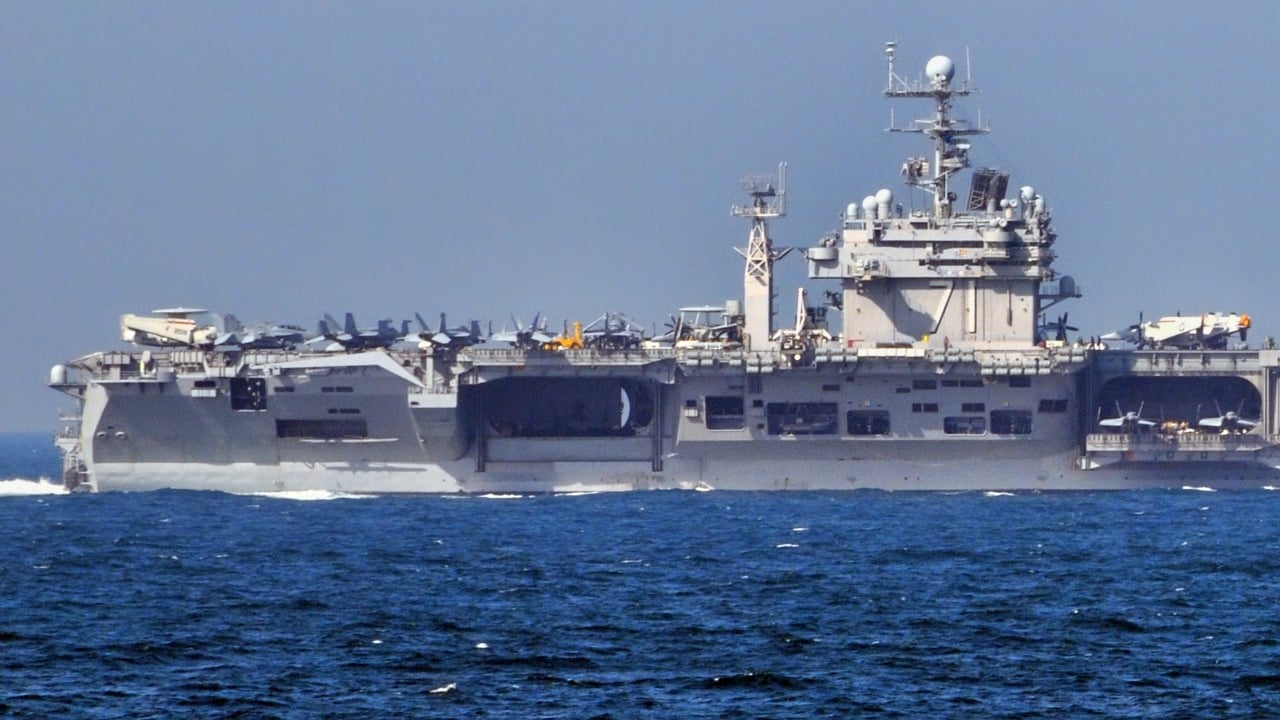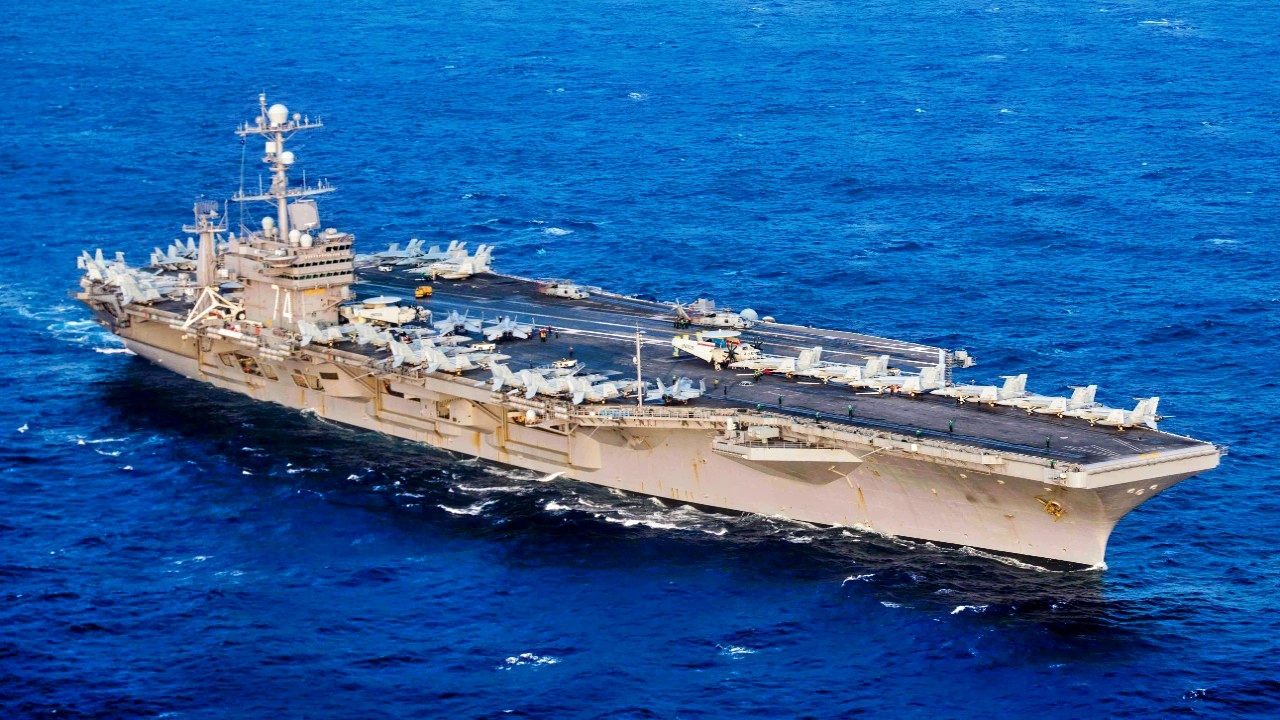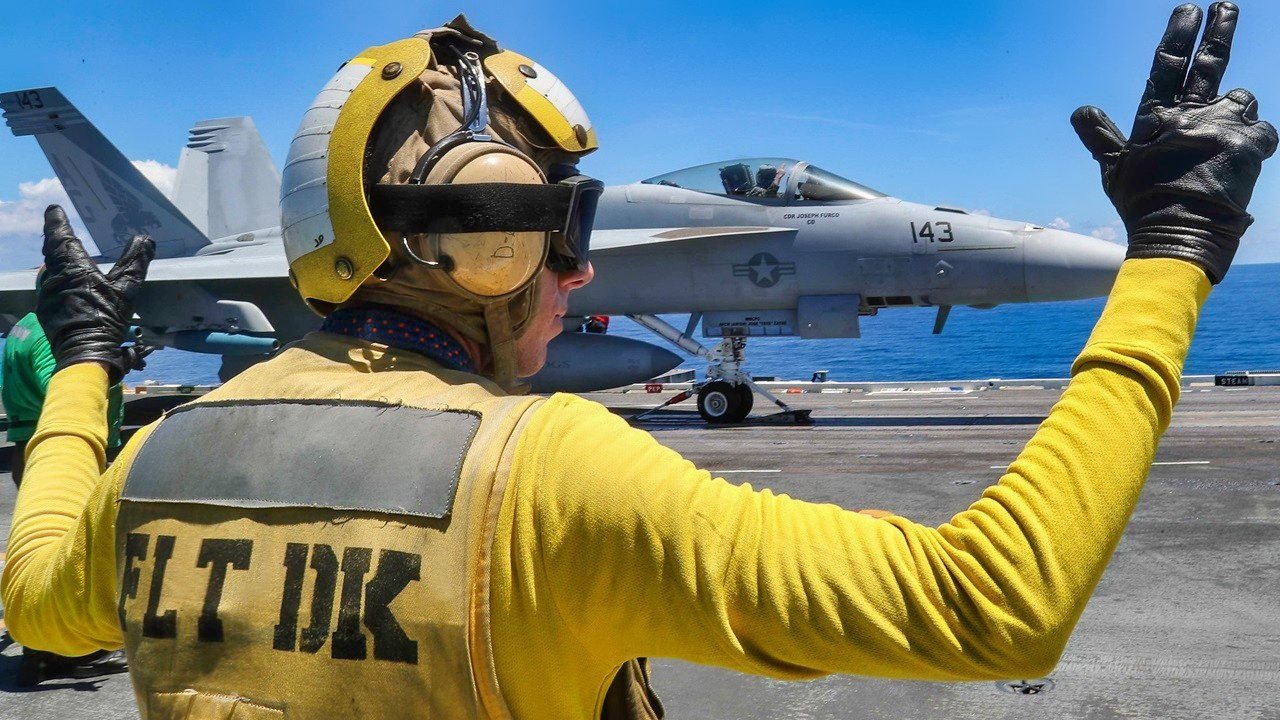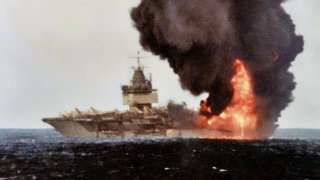The Navy Tried and Failed to Sink Its Own Aircraft Carrier for 4 Weeks
The USS America, a storied Cold War aircraft carrier, went down in history after being used in a unique 2005 Navy test to gauge carrier survivability. Instead of being preserved as a museum, the retired carrier withstood four weeks of punishing explosions in a “SinkEx” live-fire exercise.
What You Need to Know: The USS America, a storied Cold War aircraft carrier, went down in history after being used in a unique 2005 Navy test to gauge carrier survivability. Instead of being preserved as a museum, the retired carrier withstood four weeks of punishing explosions in a “SinkEx” live-fire exercise.

-America’s resilience surprised Navy officials, who observed its double-layered hull and robust construction as it endured the trial, providing valuable insights for future carrier designs.
-This rare test, conducted far offshore, highlighted the structural strength of U.S. carriers in combat-like scenarios, although a similar test today is unlikely due to public sentiment.
The USS America’s Last Stand: When the Navy Tried to Sink Its Own Carrier
The carrier was built to some real strong specs. When it came time to dispose of her, the Navy tried to sink her in an experiment. It proved to be quite historic.
Meet USS America
Instead of turning a retired aircraft carrier into a museum, why not test the vessel to see how many explosions it could take in a live-fire situation?
That is exactly what the U.S. Navy did to the USS America in 2005. The America had a sterling service history, having deployed in multiple wars and engagements since its commissioning in 1965. The America was harder to sink than the Navy expected, and these tests informed the design of the next generation of carriers.
Can a Carrier Survive a Major Attack?
The Navy had a simple question: How survivable can a carrier be? To help answer, the America’s final mission was to act as a test and evaluation demonstrator.

The vessel withstood four weeks of explosions – it was tough to sink indeed. The America was finally scuttled after the testing period, and it went to the bottom of the sea southeast of Cape Hatteras, North Carolina – about 400 miles west of Bermuda. The America was the largest warship ever sunk.
An Unusual Exercise
The Navy carried out a so-called SinkEx – a sink at-sea live-fire training exercise.
“We will conduct a variety of comprehensive tests above and below the waterline collecting data for use by naval architects and engineers in creating the nation’s future carrier fleet,” Vice Chief of Naval Operations Admiral John B. Nathman said at the time.
USS America absorbed the punishment. It simply would not sink. The ship’s double-layered hull and its many rooms contributed to the America’s toughness.
Some observers believed the carrier was stronger than a better-armored battleship.
Exemplary Service Record
The USS America was a member of the Kitty Hawk-class of upsized carriers. The ship served for over 30 years and deployed to many dangerous parts of the world. Its service included three patrols off the coast of Vietnam during the war in that country. It also launched sorties during Operation Desert Shield and Operation Desert Storm, contributing to the success of the First Gulf War.

Workers laid down the USS America’s keel in 1961. Conventionally powered, it had eight steam boilers and four steam turbine engines with four propellers. This enabled a speed of over 30 knots.
The carrier was over three football fields long ,and it displaced 82,200 tons. The flight deck was 252 feet wide, giving it room for about 85 aircraft. More than 5,300 sailors served on board. The America was protected by RIM-7 Sea Sparrow Missiles equipped on an Mk-29 launcher, and it also had a 20mm Phalanx close-in weapon system.
The ship was launched in 1964 and commissioned in 1965. An A-4C Skyhawk was the first airplane to take off from the America. The carrier was decommissioned in 1996.
A Test Unlikely to Be Repeated
The sinking test carried out on the USS America would probably not be replicated by the U.S. Navy today. There would be too much pressure from the public and the media – plus oversight from Congress – to keep a retired carrier as a museum, rather than use it as an explosive test bed.
But the exercise did serve a purpose. It helped the Navy learn a carrier’s limitations in a simulated combat environment. Carriers can be difficult to kill, even though there are many types of anti-ship missiles that can threaten these flat-tops. It’s good to know that their design can withstand mighty blows.
About the Author
Brent M. Eastwood, PhD, is the author of Humans, Machines, and Data: Future Trends in Warfare. He is an Emerging Threats expert and former U.S. Army Infantry officer. You can follow him on Twitter @BMEastwood.
Image Credit: Creative Commons. Main image is of USS Enterprise fire.


